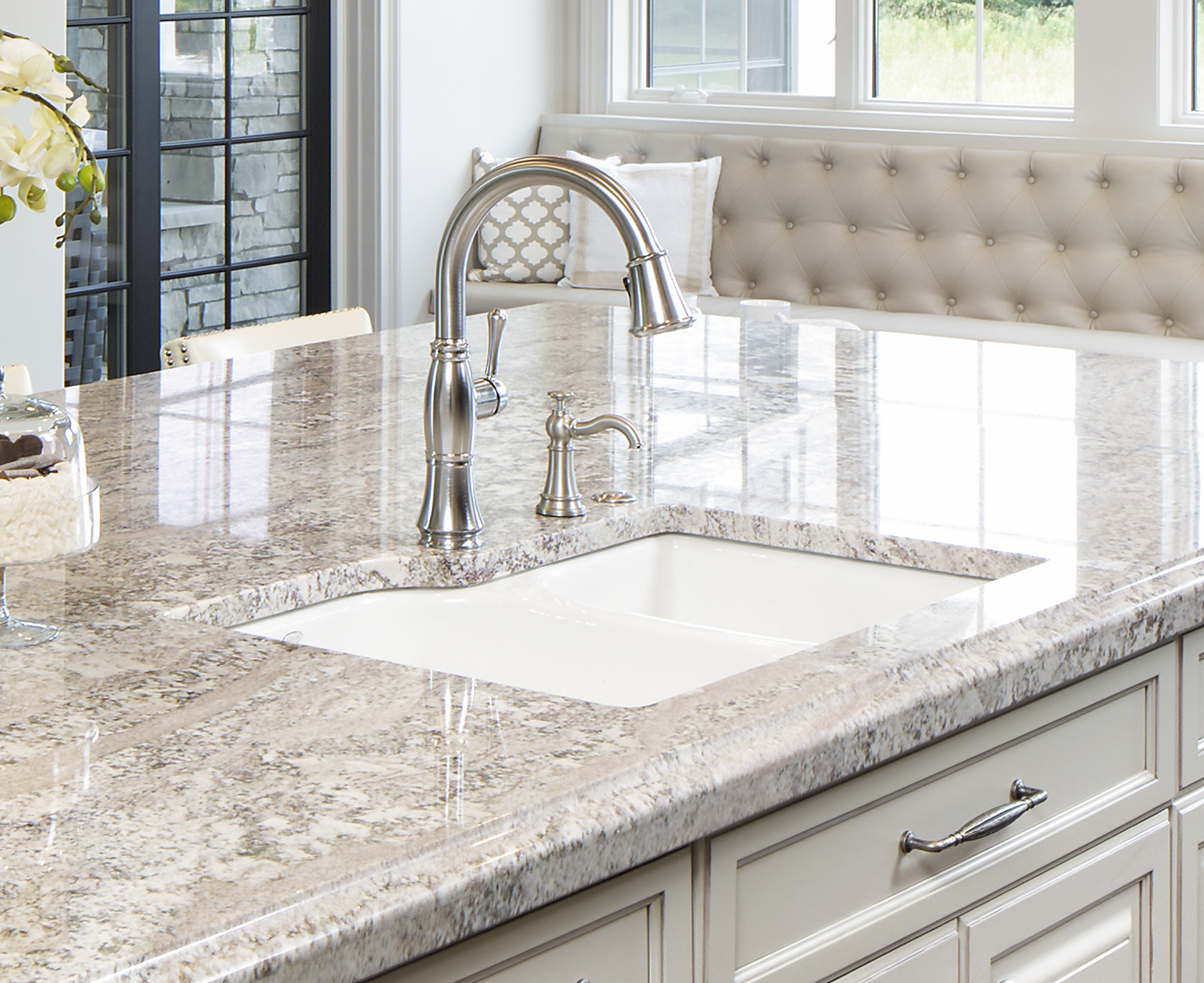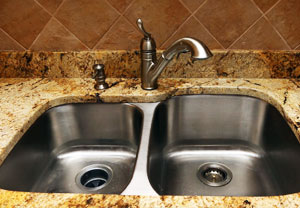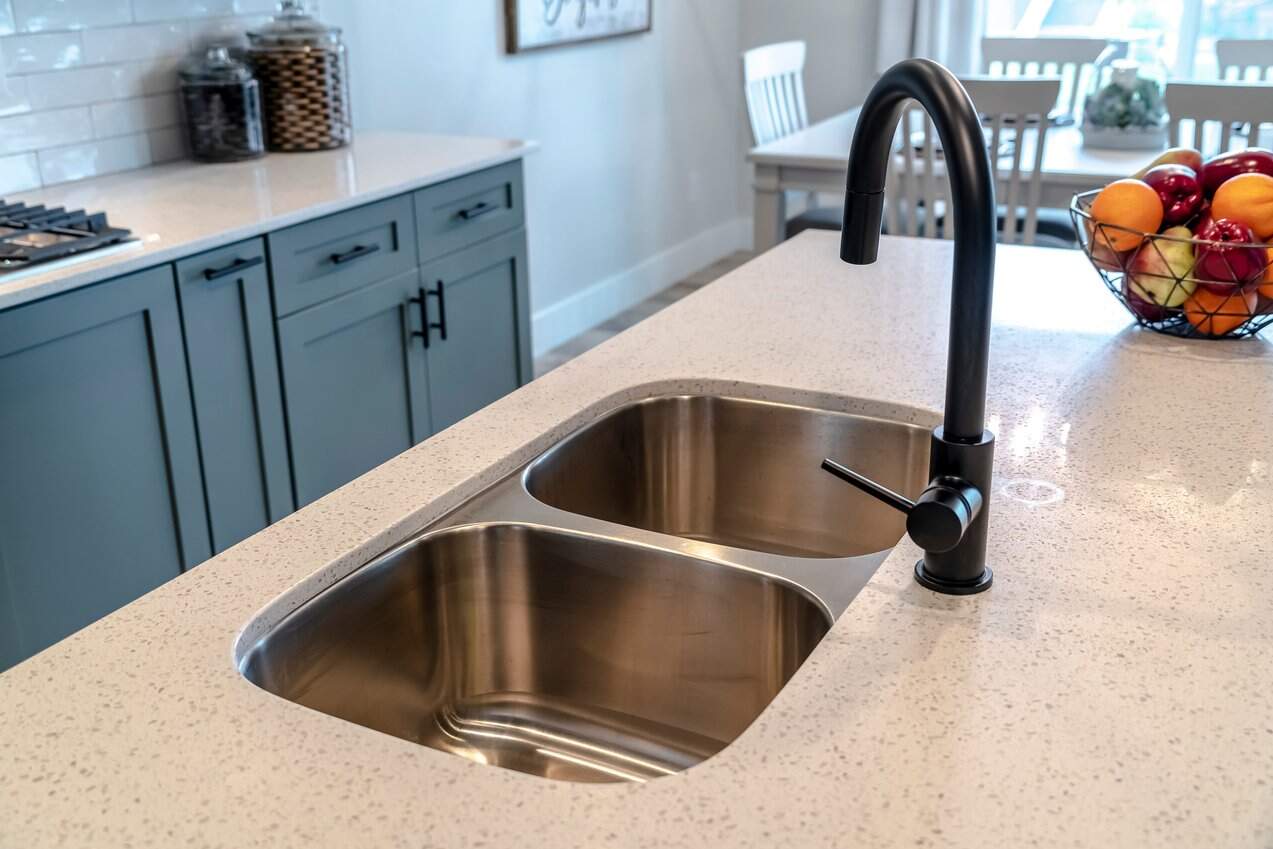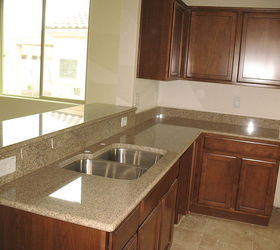When installing a kitchen sink with granite countertops, you create a functional and visually appealing focal point in your kitchen. Granite is known for its luxurious look, durability, and ease of maintenance, while the sink plays a central role in daily kitchen tasks. Blending the two seamlessly requires careful planning, especially in terms of design, compatibility, and installation techniques. When choosing a kitchen sink to pair with granite, there are several factors to consider, including the type of sink, installation method, and how to ensure that the pairing not only looks good but also enhances the functionality of your kitchen.
The first major decision is selecting the right type of sink for your granite countertops. There are several popular types of kitchen sinks, including undermount, drop-in, and farmhouse sinks. Undermount sinks are often the top choice for granite countertops because they offer a sleek, seamless appearance. With an undermount sink, the countertop extends over the sink edge, which eliminates the lip found in drop-in sinks, allowing for easy cleanup. Drop-in sinks, on the other hand, are easier to install but may not offer the same streamlined look. Farmhouse sinks, with their apron-front design, add a rustic charm and make a bold statement, although their installation with granite requires additional support due to their size and weight.
Another crucial element is the installation process itself. When installing a sink with granite countertops, precision is key. Granite is a heavy, solid material that requires professional handling, and cutting the stone to fit the sink must be done carefully to avoid cracks or uneven edges. For undermount sinks, a cutout is made in the granite, and the sink is attached beneath the counter using brackets and adhesives. This process requires proper sealing to prevent water from seeping between the sink and the granite, which could lead to mold, mildew, or even damage to the countertop over time. It’s important to hire experienced installers who can ensure the sink is securely in place without compromising the integrity of the granite.
One aspect that cannot be overlooked is how the sink pairs with the overall design of the kitchen. Granite countertops come in a wide range of colors and patterns, so the sink you choose should complement this aesthetic. Stainless steel sinks are a popular option for granite countertops due to their durability, ease of maintenance, and neutral appearance, which suit a variety of kitchen styles. If you’re aiming for a more cohesive, high-end look, consider sinks made from composite granite or natural stone, which can blend seamlessly with the granite countertop, offering a unified visual effect. Some homeowners also opt for copper or cast iron sinks for a more distinctive, decorative touch, but these materials require more upkeep.

Beyond aesthetics, functionality plays a key role in choosing the right sink for your granite countertops. The size and shape of the sink should be proportionate to your kitchen’s layout and your needs. For instance, a deep, single-basin sink may be ideal if you regularly wash large pots and pans, while a double-basin sink allows for multitasking, such as washing dishes in one basin and rinsing vegetables in the other. Consider how often you cook, the size of your family, and your cleaning habits when selecting a sink size. Additionally, think about the placement of your sink in the rest of the kitchen. Installing the sink near the dishwasher or prep areas can improve the flow and efficiency of your workspace.
Granite countertops also require special care when installing faucets and other accessories. Granite is dense, so drilling holes for faucets, soap dispensers, or sprayers must be done with precision to prevent damage. It’s essential to know how many holes your sink requires for fixtures and plan accordingly. In some cases, homeowners may choose to have extra holes drilled for future needs, like adding a water filtration system or a second soap dispenser. Each hole must be sealed properly to prevent water damage.
Maintenance is another factor to consider when pairing a kitchen sink with granite countertops. While granite is durable and resistant to heat, stains, and scratches, it is porous and requires regular sealing to maintain its look and longevity. When cleaning the area around the sink, avoid harsh chemicals that can damage the granite’s sealant. Opt for a mild soap and water solution or granite-specific cleaners to keep the surface looking pristine. Additionally, it’s crucial to clean the area where the sink meets the countertop regularly to avoid grime buildup, which can erode the sealant over time.

One of the most significant advantages of having a granite countertop with a well-installed sink is the ease of cleaning. The smooth, solid surface of the granite allows for quick and effortless cleanup, and when paired with an undermount sink, it becomes even more efficient. You can simply wipe food scraps and liquids directly into the sink without worrying about debris getting stuck on the countertop’s edge. This is particularly beneficial in busy households where the kitchen sees a lot of use and spills are frequent.
Cost is another important consideration when installing a sink with granite countertops. Granite itself is an investment, and the sink you choose can affect the overall budget of your kitchen renovation. Stainless steel sinks are typically the most affordable option, while composite granite or stone sinks can be more expensive. Installation costs will also vary depending on the complexity of the sink’s design and the skill level required to install it. If you’re on a budget, it’s essential to balance style, functionality, and cost without compromising on quality.
Environmental impact is becoming an increasingly important consideration for many homeowners. Granite is a natural material that requires mining, which has an environmental cost. However, it is long-lasting and can be more sustainable in the long run compared to man-made materials that may need replacing more frequently. If you’re concerned about sustainability, look for sinks made from recycled materials, such as stainless steel, or consider alternatives like composite granite, which combines natural stone with resin for a lower environmental impact.
Installing a sink with granite countertops can significantly increase the value of your home. Granite is a sought-after material in real estate because of its luxurious appearance and durability, and pairing it with a high-quality sink enhances both the functionality and aesthetic appeal of the kitchen. Prospective buyers are often willing to pay a premium for homes with well-designed kitchens featuring granite countertops, especially if the sink and fixtures are modern and well-maintained.

It’s also worth considering future kitchen trends when installing a sink with granite countertops. While granite remains a popular choice, newer materials such as quartz are gaining popularity for their non-porous nature and low maintenance requirements. However, granite’s natural beauty and timeless appeal ensure it will never go out of style. If you plan to sell your home in the future, a granite countertop paired with a high-quality sink will continue to be an attractive feature for potential buyers.
Soundproofing is another practical consideration when installing a kitchen sink with granite countertops. Stainless steel sinks, in particular, can be noisy when dishes or silverware are dropped into them. To counter this, many manufacturers offer soundproofing options such as pads or sprays that reduce noise. These soundproofing measures are particularly important when installing a sink in a kitchen with granite countertops, as the hard surface of the granite can amplify noise.
Last, consider the overall layout of your kitchen when installing a sink with granite countertops. If you have an island, placing the sink in the center can create a functional workspace that allows for easy access to all areas of the kitchen. Alternatively, placing the sink beneath a window can provide a pleasant view while doing dishes. The layout should complement your cooking and cleaning habits to create a space that is both beautiful and practical.

Common Mistakes to Avoid
Improper Sealing: One of the most common mistakes when installing a kitchen sink with granite countertops is not sealing the area properly. If the seal is compromised, water can seep into the gap between the sink and countertop, leading to mold, mildew, and eventual countertop damage.
Wrong Sink Size: Choosing a sink that is too large or small for your kitchen layout can throw off the balance of your design. Always measure your space carefully to ensure the sink fits well with your countertop and the overall kitchen setup.
Inaccurate Faucet Placement: Incorrect placement of the faucet can lead to splashing and awkward usage. Plan the placement based on the depth of the sink and countertop to ensure comfort and ease of use.
Skimping on Materials: Opting for low-quality sinks or improper installation methods to save costs might lead to issues like leaks, damage, and the need for frequent repairs. Invest in durable materials and professional installation to ensure longevity.
Ignoring Functionality: While aesthetics are important, functionality should be a priority. Make sure the sink design and placement enhance your kitchen workflow rather than hinder it.
Neglecting Future-Proofing: Forgetting to consider future needs, like extra faucet holes or soundproofing options, can be a mistake. Always think about how your kitchen needs might evolve.

How do I maintain the area around my kitchen sink with granite countertops?
To maintain the area around your sink, clean it regularly with a mild soap and water solution or a granite-specific cleaner. Avoid using harsh chemicals or abrasive materials that can damage the granite seal. Re-seal the granite every year to keep it resistant to stains and water damage.
What is the best type of sink to install with granite countertops?
Undermount sinks are generally considered the best option for granite countertops because they provide a seamless look and allow for easy cleaning. However, drop-in sinks and farmhouse sinks can also work well, depending on your kitchen’s style and your personal preferences.
Can I install a kitchen sink with granite countertops on my own?
While it’s possible for experienced DIYers to install a kitchen sink with granite countertops, it is generally recommended to hire professionals. Granite is heavy and can crack if mishandled, and precise cutting is required to fit the sink perfectly.

Do I need to seal the granite around my sink regularly?
Yes, granite is a porous material that needs to be sealed regularly to prevent water absorption and staining. It’s especially important to seal the area around the sink where it is more exposed to water and spills.
What are the common problems with undermount sinks in granite countertops?
Common issues with undermount sinks include improper sealing, which can lead to water leaks, and insufficient support, which can cause the sink to detach over time. To avoid these problems, ensure the sink is installed by a professional who understands the proper techniques for securing it to granite.
Can I replace my existing sink without removing the granite countertops?
In most cases, it is possible to replace a sink without removing the granite countertops, especially if the replacement sink is similar in size and style. However, care must be taken to avoid damaging the granite during the removal and installation process.
Comparing Undermount Sinks for Kitchen Countertops

How to Install an Undermount Sink to a Granite Countertop

Related articles:
